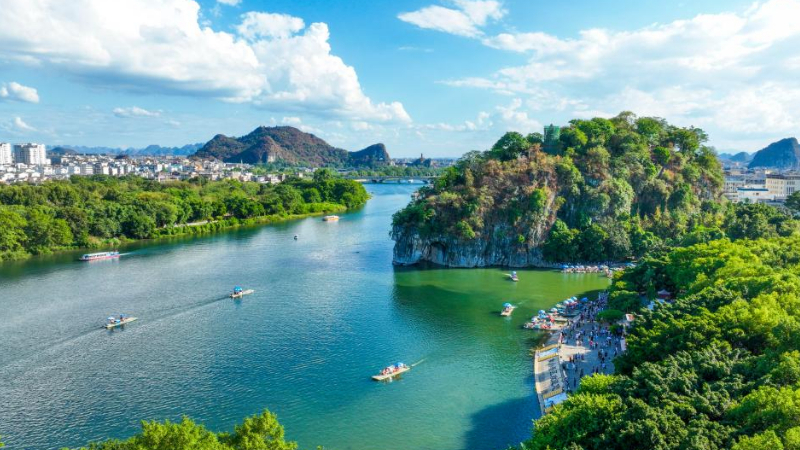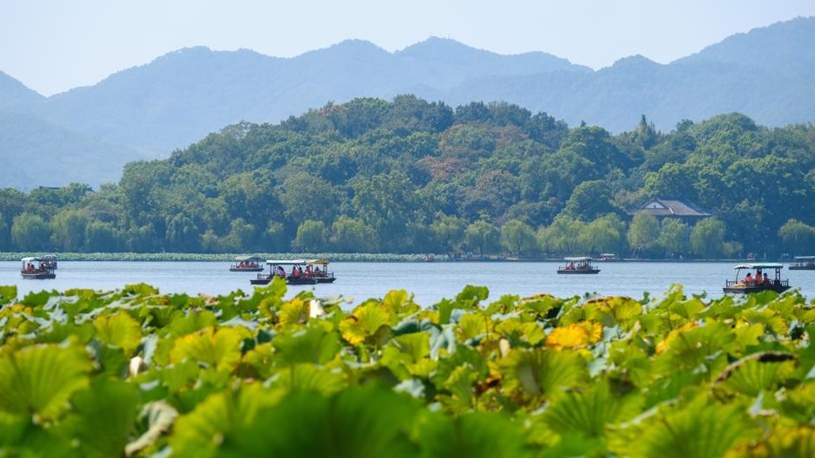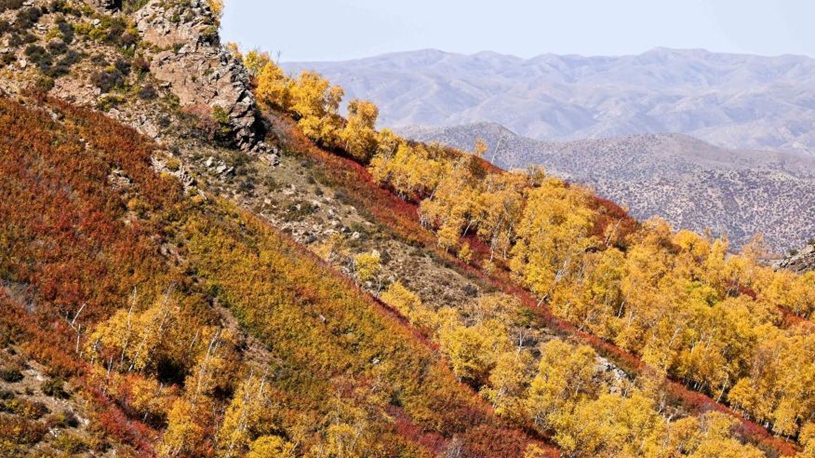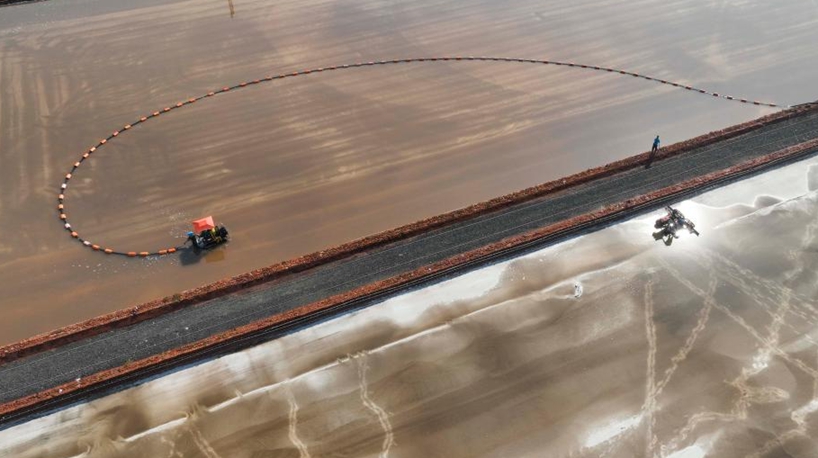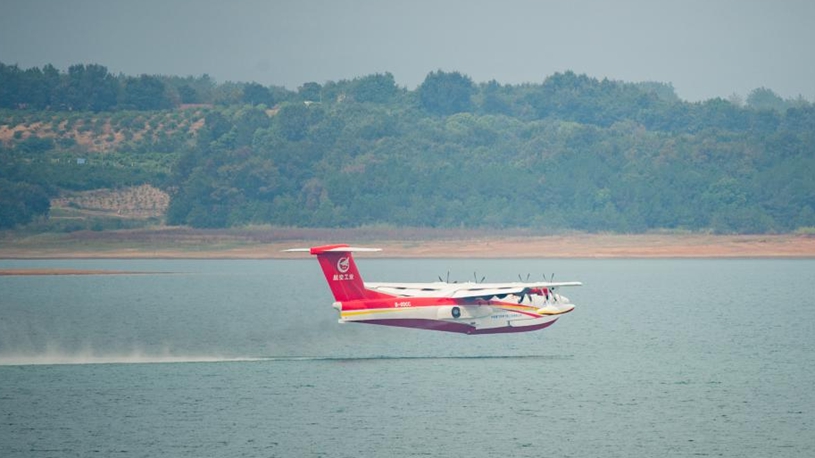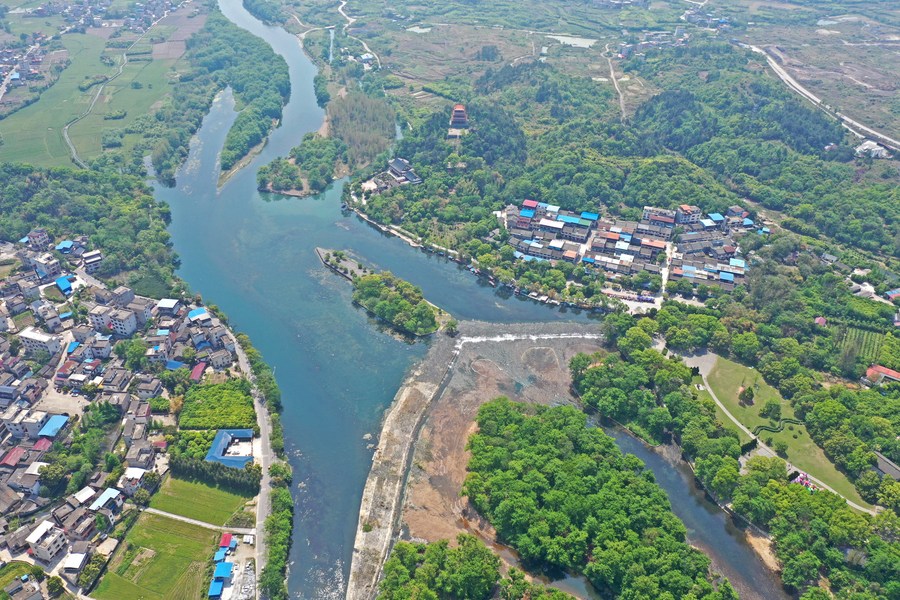
Aerial photo taken on April 9, 2022 shows Lingqu Canal in Xing'an County, south China's Guangxi Zhuang Autonomous Region. Lingqu, one of the world's oldest and most well-preserved artificial canals, was inscribed on the World Heritage Irrigation Structures in 2018. (Xinhua/Zhou Hua)
BEIJING, Oct. 6 (Xinhua) -- Four more ancient Chinese irrigation sites have been recognized as World Heritage Irrigation Structures (WHIS), according to the Ministry of Water Resources.
Granted by the International Commission on Irrigation and Drainage (ICID) on Thursday, the inclusions of the Tongjiyan Irrigation System, the Xinghua Duotian Irrigation and Drainage System, the Songgu Irrigation Scheme and the Chongyi Shangbao Terraces have brought the total number of Chinese irrigation projects on the WHIS list to 30.
"China, among all countries, has the most diverse types of heritage irrigation projects with the widest distribution and the best irrigation benefits," said Chen Mingzhong, an official with the water resources ministry.
With its headwork located at the confluence of three rivers in Chengdu City in southwest China's Sichuan Province, the Tongjiyan Irrigation System has the largest and longest-operating movable weir in Chinese history. It now irrigates nearly 35,000 hectares of land and provides water for four counties in the cities of Chengdu and Meishan.
The Xinghua Duotian Irrigation and Drainage System, located in Xinghua City in the eastern Jiangsu Province, waters arid uplands with the likes of dykes, channels and water gates. It remains a contributor to local irrigation, drainage, flood control, drought prevention, ecological agriculture and tourism.
Located in Songyang County in east China's Zhejiang Province, the Songgu Irrigation Scheme is an excellent model of ancient irrigation works for small and medium-sized river basins. With a dense network of weirs, dykes, ditches and channels and drawing water from a local stream, the irrigation system was perfected during the Ming and Qing dynasties (1368-1911) and now has an irrigation area of about 11,000 hectares.
The Chongyi Shangbao Terraces cover an area of about 3,400 hectares in the mountainous region of Chongyi County in the eastern Jiangxi Province. Built on steep slopes as early as in Song Dynasty (960-1279) and perfected during the Ming and Qing dynasties, the terraces have sound irrigation and ecological systems.
It is important to present the history and culture of Chinese irrigation works and study the science, technology, cultural value and management experience behind them, Chen said, noting that this will help the country's efforts to advance rural revitalization, ecological protection and sustainable water resource utilization.
Along with the four Chinese projects, another 15 irrigation projects in countries including Australia, India and Iraq were also added to the WHIS list, which now covers 140 projects in 18 countries.
Established in 1950, the ICID is an international organization aimed at boosting scientific and technological exchanges on irrigation, drainage and flood control.
The WHIS designation, established by the ICID in 2014, aims to protect and promote irrigation projects of historical value and their scientific experience. ■

